"The Conservative Case for Abstract Art"
Is abstraction a viable path for those who want to embrace the spiritual in art?
No, no, hear me out on this…
It is a common joke that when a pseudo-conservative journals and authors want to advance progressive ideas, they entitle their argument “The Conservative Case for X” (X being gay marriage, mass migration, transgender conversion and so forth). The joke comes from the fact that there is no conservative case for these positions – unless you see all conservatives as simply rétardataire liberals. But what if abstract art does offer something of value for those of us who approach culture from an explicitly right-wing temperament?
Abstraction is the quintessential art approach of the Modernist era because of its promotion of the aesthetic specialisation and fragmentation, in part as it distinguishes the modern artist from the ideals of his forebears. The old ideals were of proficiency in imitation, incremental stylistic evolution, synthesisation of skills and development within each work of an integrated balance of theme, style and narrative. What could be more of a break than art that dispensed with all of that, in the form of art that rejected even figuration? Considering this, we can see why a reactionary might be opposed to abstraction on principle, as it assaults the core aesthetic functions of art, as they understand them. For many, abstraction is a refutation of art – an act of negation or aggression.
This came to mind when I visited the exhibition Jef Verheyen: Window on Infinity (Museum of Fine Art, Antwerp (KMSKA), 23 March-18 August 2024). Verheyen was a Belgian ceramacist and painter who moved into abstract art in the 1950s, working within the ZERO movement. He was initially working in ceramics in the rough planar manner of Wilfredo Lam, Matta and Klee. By 1956 he had largely given up ceramics to work solely as a painter and was exhibiting with foreign painters and sculptors. The exhibition chronicles his rapid artistic and intellectual development, alongside pieces by key colleagues and documentation.
Verheyen became engaged by Buddhist ceramic painters of China and Korea. Their attempts to embody emptiness through white vessels (mostly bowls or dishes) offered a distinctly spiritual approach to abstraction, something that had occupied Western abstract painters for almost half a century. A handful of other artists formed bonds as they worked on abstract art. Piero Manzoni produced Achromes, which had no colour, while Yves Klein worked in monochrome, eventually patenting his own shade of blue. Günther Uecker’s swirling surfaces of nails swirling like atoms or grains of sand invoke the microcosm and macrocosm. Lucio Fontana made canvases and ceramics then slashed or punctured them, thereby inviting viewers to “look through” the physical object to the sense of the numinous, notionally beyond the surface. All of these were critiques of the art market and materialism (albeit sometimes tangentially), with each artist opening avenues to art of renewed spiritual or meditative qualities. This group were called the ZERO Movement and Verheyen is considered one of the most prominent figures in it.
Verheyen moved from achromes (without colour) to monochromes (one colour) thence to panchromes (all colours). The current exhibition has abstract paintings by Verheyen that are marvels of execution, with transitions of colour on flawless surfaces, so gentle that they seem breathed into existence. They were, however, painted in lacquer using brushes alone, not airbrushes. Gentle transitions of pure colour invite us to watch and wait, our responses changing as our gaze moves over the surface and eventually through it. ZERO artists made picture by placing surfaces over candle flames, which left smoke traces. This “fumage” technique initiated by Wolfgang Paalen in the 1930s. At that time fumage was used to create starting points for automatist Surrealist imagery, conversely, ZERO artists wanted their fumage images (made around 1960-1) to remain empty and uninterpreted. The dim, hazy and grainy forms of fumage are close to Verheyen’s paintings at this time.
Once we get back to the matter of emptying out of art – the removal of explicit subject matter, figures, narrative, even “incident” – we can see how the spiritual can be reintroduced into art. Verheyen’s Black Space (1960) invites us to gaze into the void.
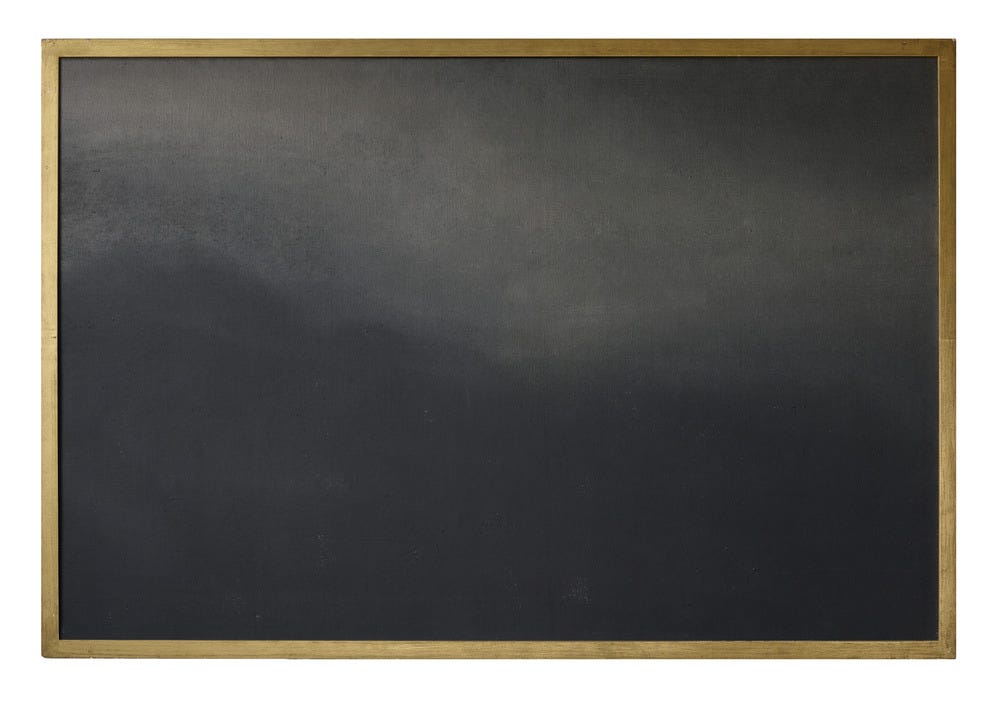
It is not solid black; it is dim and speckled like a twilight mountain view in heavy fog. It is not so different to the dark clouds and skies one finds in the background of paintings, such as Romantic landscapes and Renaissance paintings of holy beings in skies. Hanging nearby is stygian snow landscape by Constant Permeke, a Flemish Expressionist of an older generation than Verheyen.
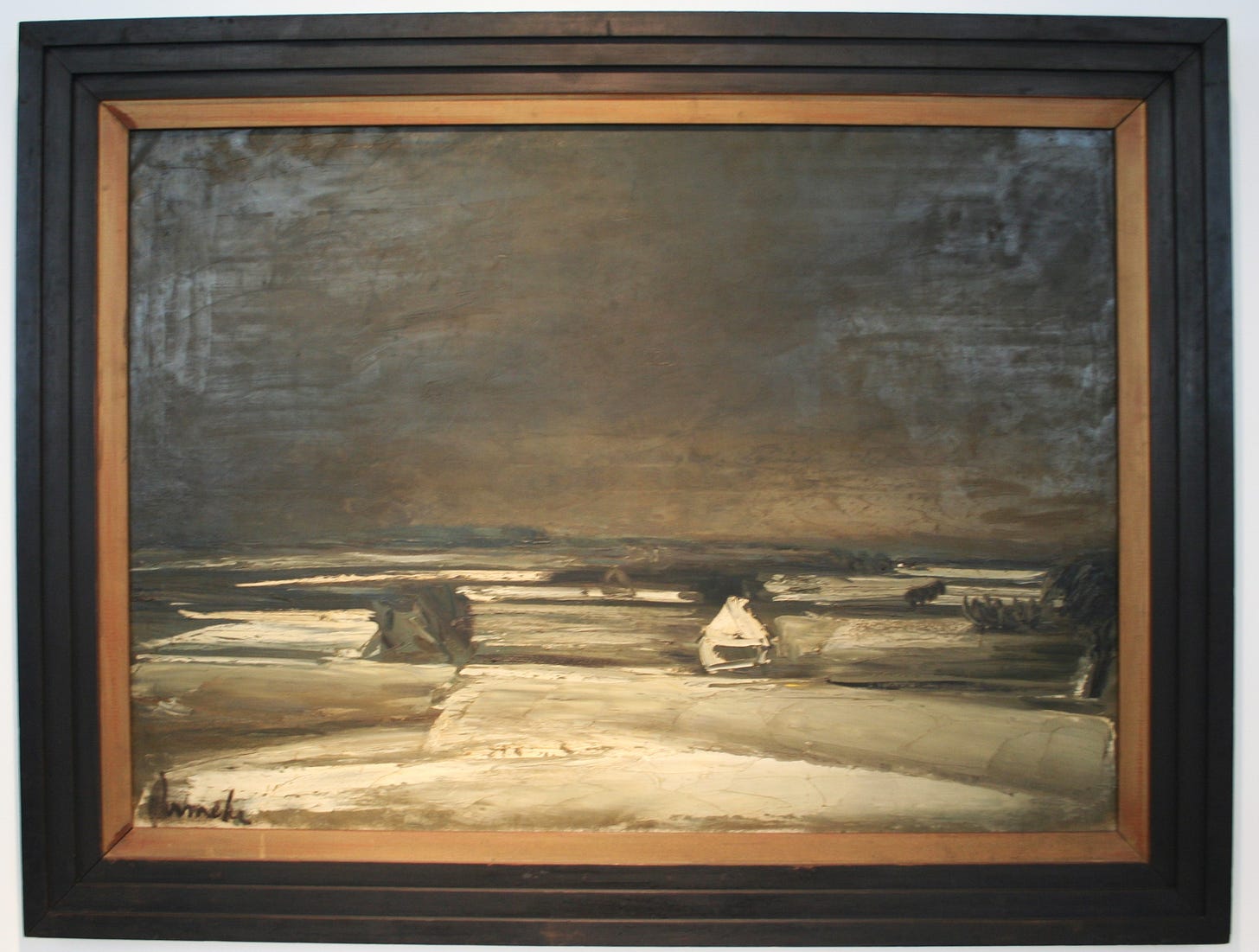
Much of the same feeling is carried over into Verheyen’s canvas, but without direct description but through evocation of the dimness. Verheyen’s black paintings on stained grounds have some aspects in common with Rothko’s most sombre canvases, used to aid spiritual contemplation. There are obvious parallels with Chinese scroll paintings in ink wash. Clearly Verheyen had such misty mountain views in mind when he painted some of his paintings of the 1960s. The later paintings have very simple geometric planes or divisions which are intended to exclude any potential images or even indications of landscape, horizon or structures. The gradation of colours encourages us to scrutinise them closely and become lost in the transitions, thereby losing our natural tendency to search out specific details and to relate them to the whole. The whole is beyond – if not our understanding – at least our focussed attention.
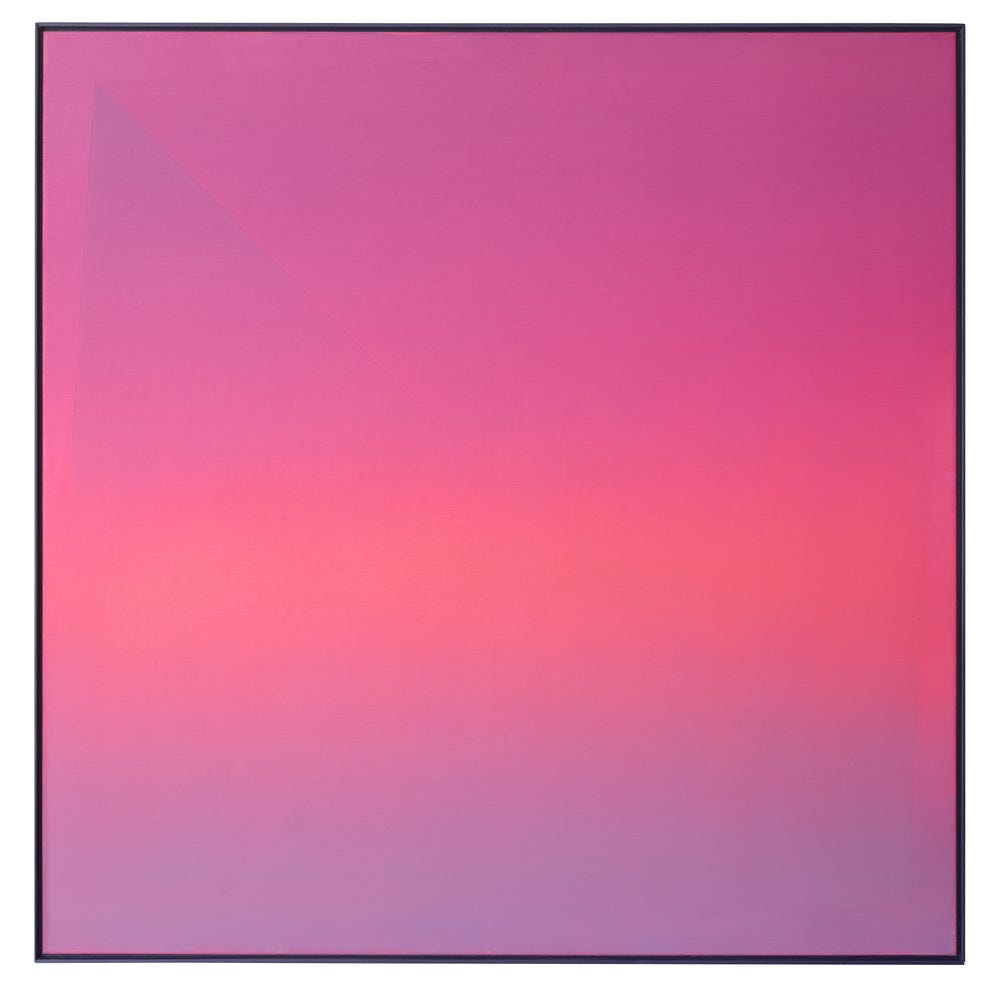
This tends to be confirmed by the viewing experience of a curatorial coup possible only at the KMSKA. The museum has permitted curators to hang Verheyen’s diptych Lux est Lex (1974) either side of Jean Fouquet’s Madonna (c. 1450) one of the masterpieces of the European Early Renaissance. Verheyen’s painting was based on the Madonna, a painting he (as a native Antwerper) knew well. The hang does not detract from the majesty of the Old Master work; Verheyen’s simple abstracts (its colour choices based on the Madonna) complement that picture, reinforcing its stunning colour contrast.
Recently there have been a lot of discussion about what a socially or politically reactionary art might look like. At first, Verheyen’s painting really is not an obvious model for the aspiring dissident artist. However, consider that abstraction allows an artist to dispense with synthesis and story; for the Oriental artist, the function of art as a portal to meditative contemplation is clearly a religious one. This was something that Verheyen was sensitive to, and which directed an engagement with Buddhism. For the religiously minded, abstraction should not be something to fear; the notion of the infinite and non-incarnate must be appreciated by members of every faith. Purification of expression is a drive common not only to Modernists but also aesthetes, ascetics and the religious. It allows the painter to concentrate upon atmosphere, mood and pictorial depth, sometimes in order to produce feelings conducive to the transcendental. In a time when so many artists are not properly trained (or have an imperfect grasp of what is needed) to make great and meaningful religious art with narrative, perhaps the best we can do (until this situation changes) is to open up ourselves to the potential of religious and spiritual in art through abstraction.
Jef Verheyen: Window on the Infinite is a good place to start such considerations.

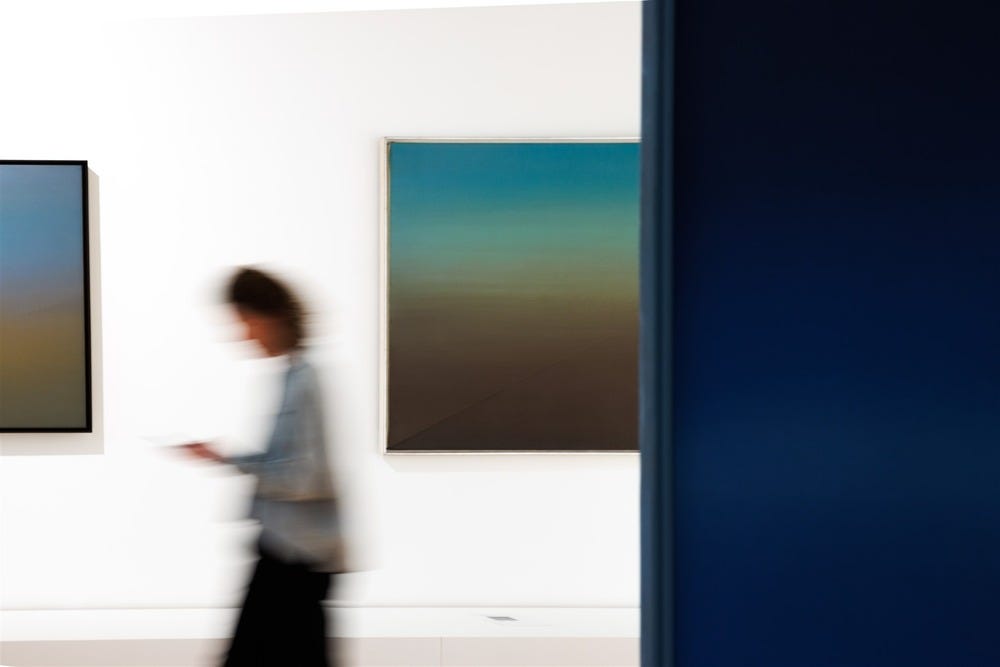
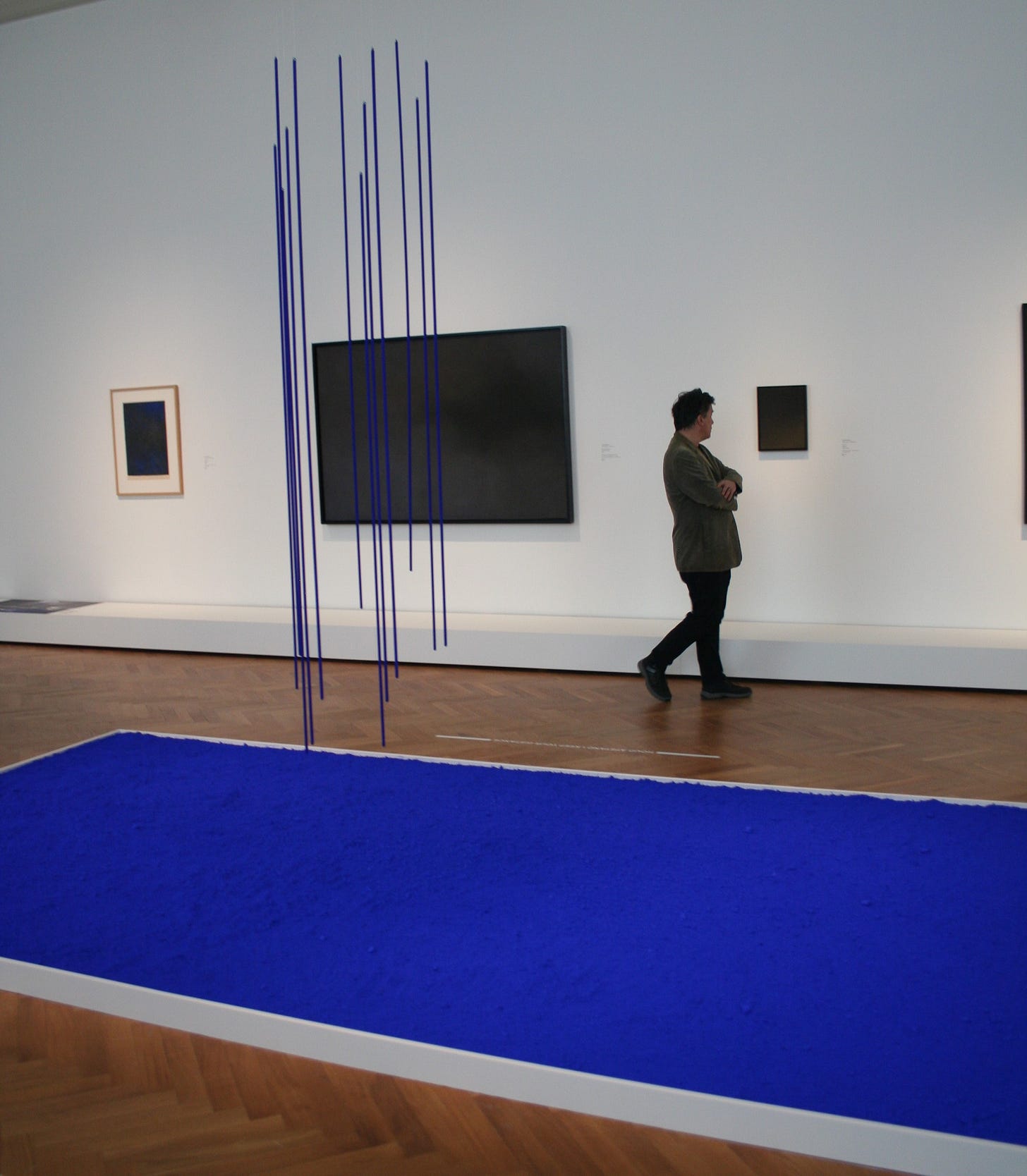
Really interesting, thank you. Some of Verheyen’s art ended up on prints sold by the 90’s high street art store Athena. It was as if his use of light and colour, and abstract imagery, was made for that media and that decade, although the artist himself passed away in 1984.
I say this by way of comment, not criticism: you're conflating conservative politics and religiosity. American Buddhism has an enormously progressive slant, and if I had to guess Verheyen's politics, I would assume commensurately. Could a religious conservative plug such sentiment into an artistic project? Absolutely, even an abstract one, possibly any other as well.
The question remains, what is aesthetic conservatism? I wish someone would deal with this. Typically the trad crowd likes figurative painting in the Western mode from, say, 1500-1850. But most contemporary artists who work in this mode are as politically progressive as any other type. Bo Bartlett comes to mind. Meanwhile, conservatives tend to align with the institutions, but the art institutions are typically illustrating progressive politics in some way. Conservatives tend to align with conventions, but conventions are basically neutral, and even something like postminimalism has them to some degree. I suspect that political conservatism is real, and religious conservatism is real, but aesthetic conservatism is not.